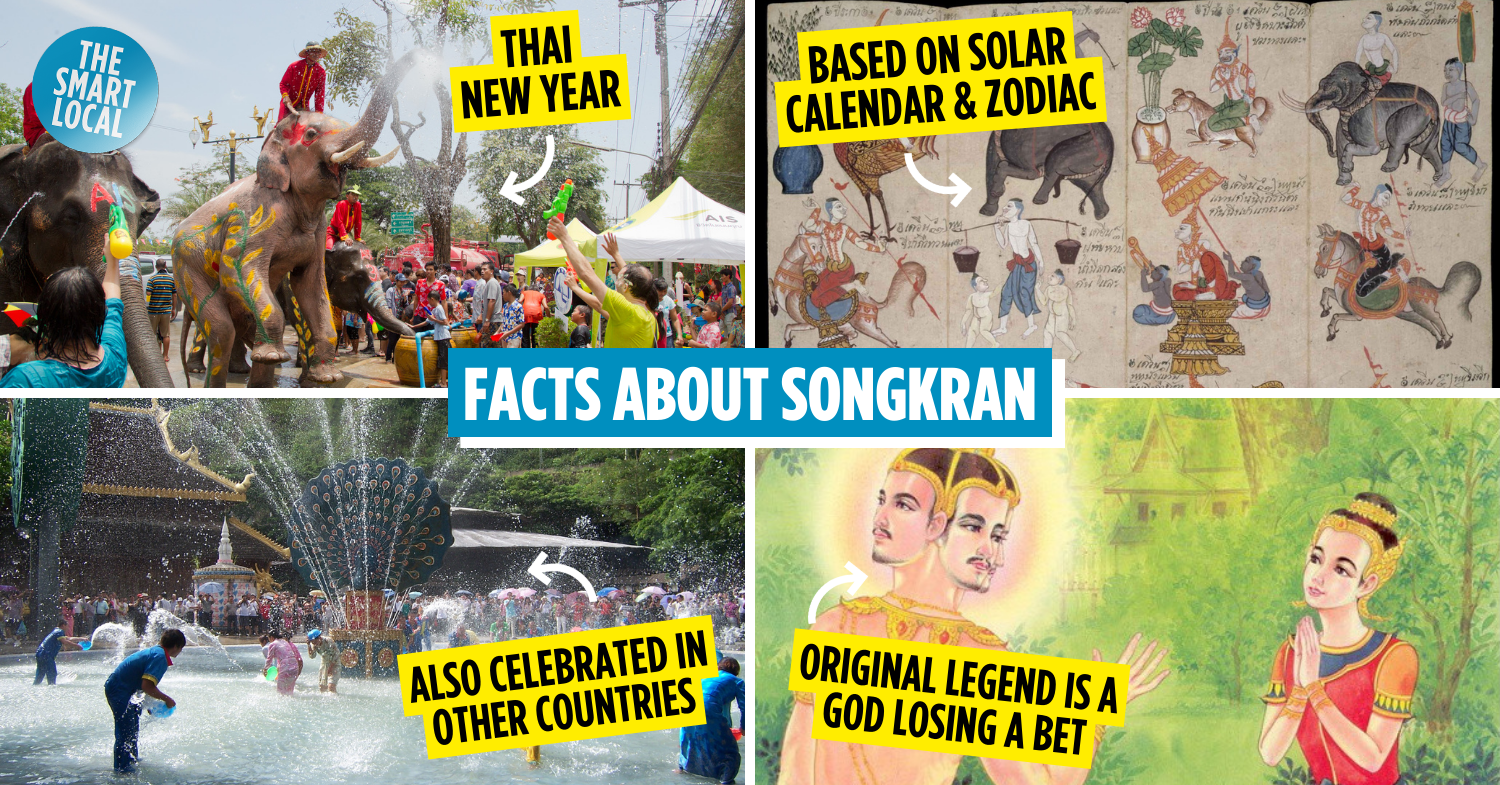Songkran festival facts
Songkran festival is Thailand’s biggest and longest holiday. The stories of water fights along Khaosan Road are the stuff of legends. Despite that, most people, including Thais, often don’t know about the holiday’s myth origins, and customs beyond the water fights. That’s why we’ve compiled a list of Songkran facts so that you’ll know just how this holiday came to be.
Here are 7 Songkran festival facts that might surprise you.
1. Songkran festival is the Thai traditional new year
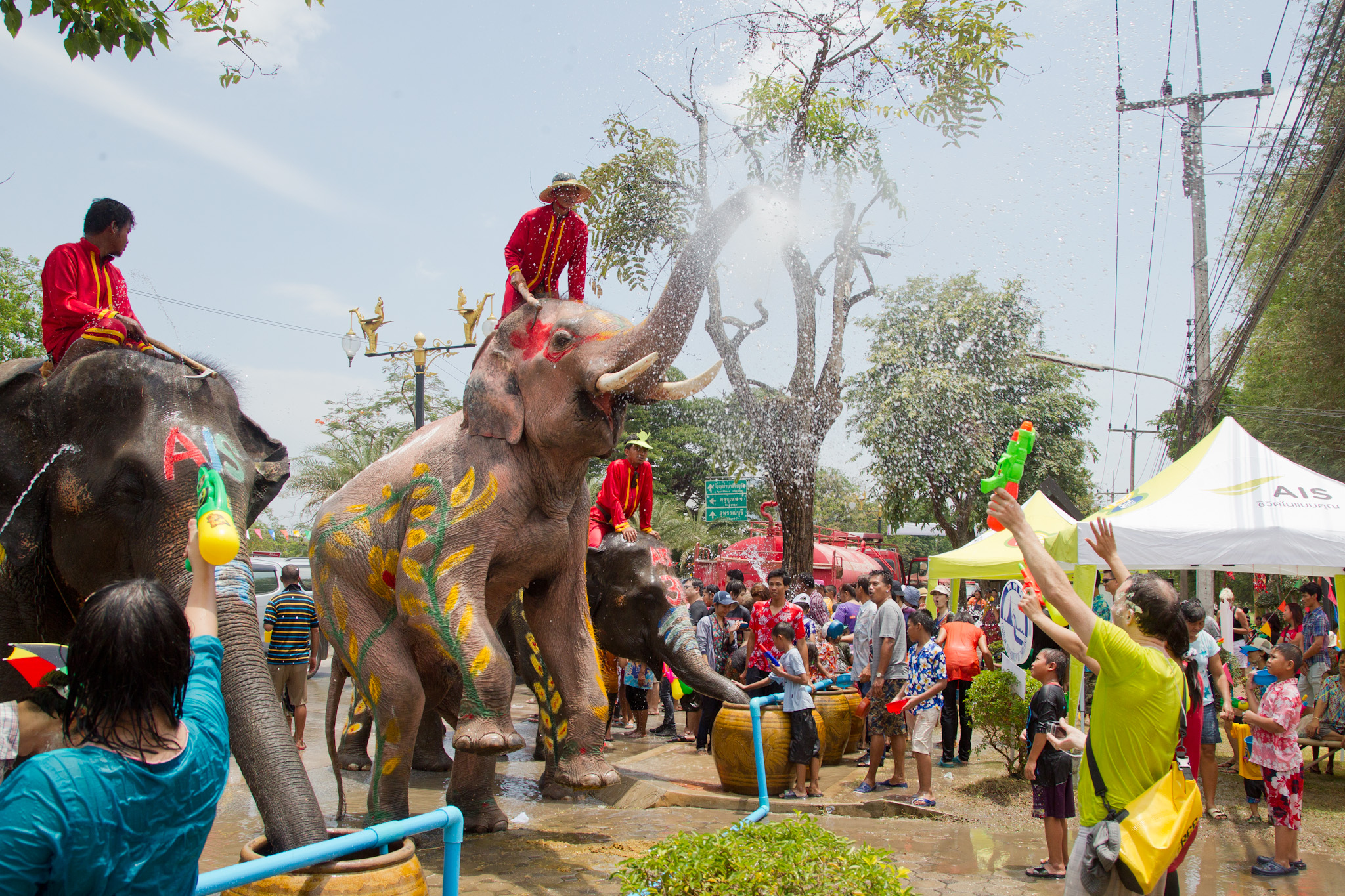
Image credit: JJ Harrison via Wikimedia Commons
What makes Songkran festival special to Thais? Apart from the obvious long holiday that we always look forward to, Songkran would mark the coming of the new year.
While the holiday takes place at a fixed date from 13-15 April now, it was originally based on astrology and the solar calendar. The royal palace would even make an announcement to the public as to when the new year was coming.
In the late 1800s, the Thai new year would be changed to a fixed date of 1 April. In 1941, Thailand would use 1 January as the official new year with Songkran being made a national holiday instead.
2. Songkran means “movement” or “passage” in Sanskrit
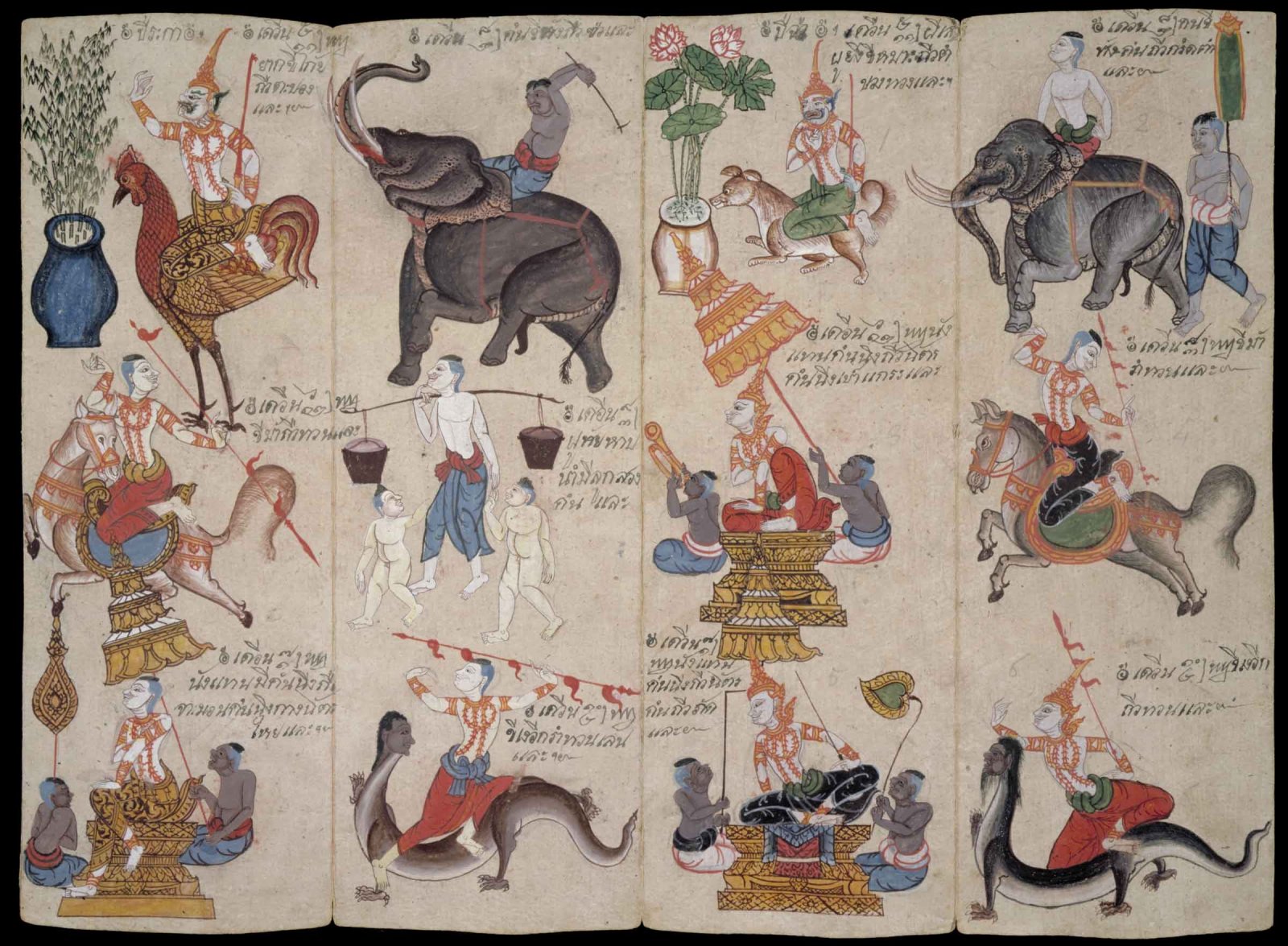
Image credit: Wikimedia Commons
Like many fancy Thai words, Songkran derives from Sanskrit. Specifically, “Sankranti” which refers to the transmigration of the sun from one zodiac to another.
As mentioned above, Songkran is based on the solar calendar, so this transmigration of the sun for Thais specifically refers to when the sun moves from Pisces to Aries in April.
It can also mean “movement” or “passage.”
3. Each of the 3 days of Songkran stands for something different
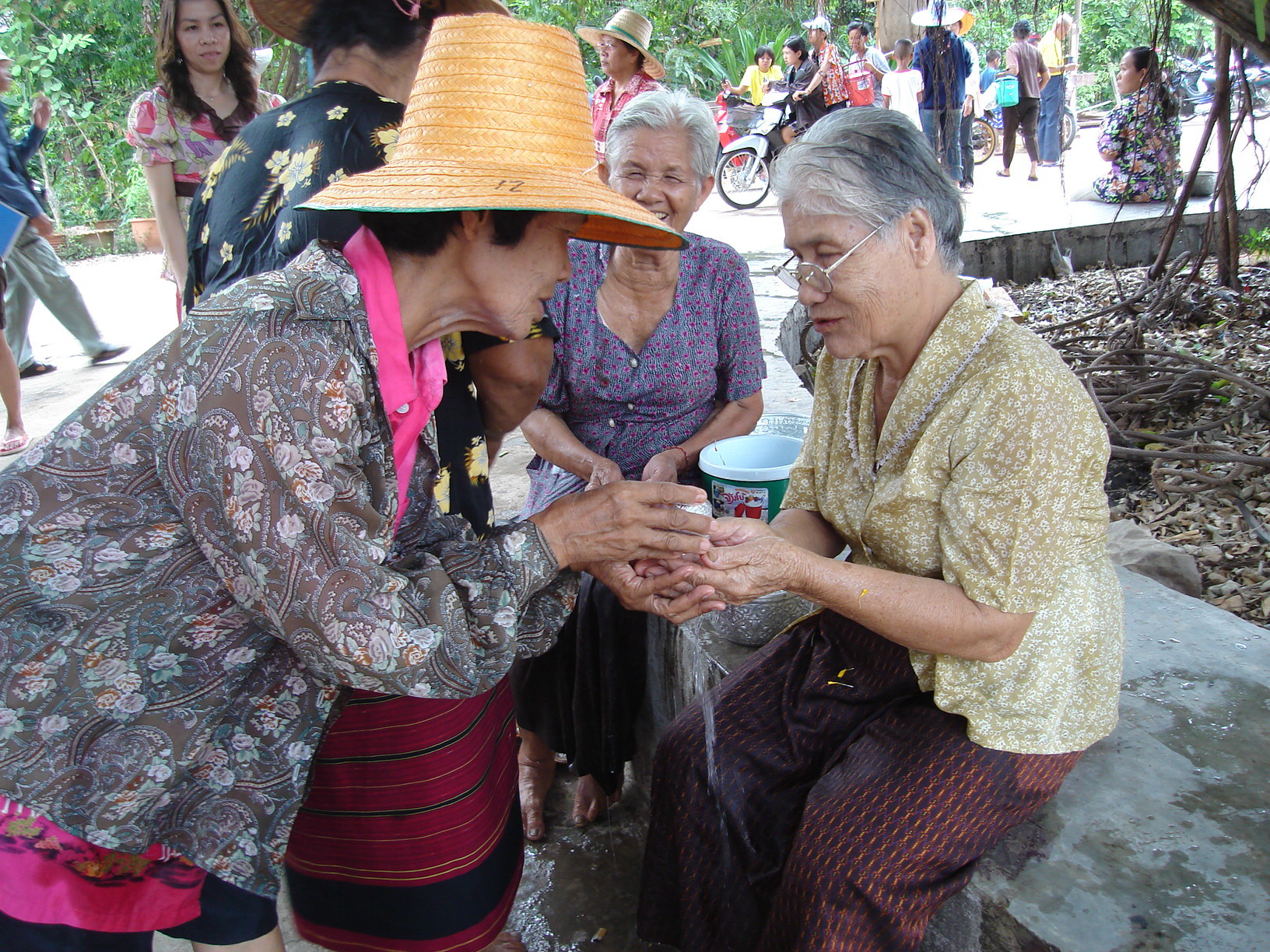
Image credit: Tevaprapas via Wikimedia Commons
The 3 days of Songkran each stand for something.
The 1st day is called “Maha Songkran” (มหาสงกรานต์), and is also referred to as National Elderly Day. On this day, people will often visit their older relatives to pay their respects.
The 2nd day is called “Wan Nao” (วันเนา). It is also called Family Day, and as such people will often spend the day with their families.
The 3rd day is called “Wan Thaloeng Sok” (วันเถลิงศก). This is the day of the New Year. It is customary for people to wear at least one new piece of clothing to boost their fortune for the coming year.
4. Each Thai region has their own flair
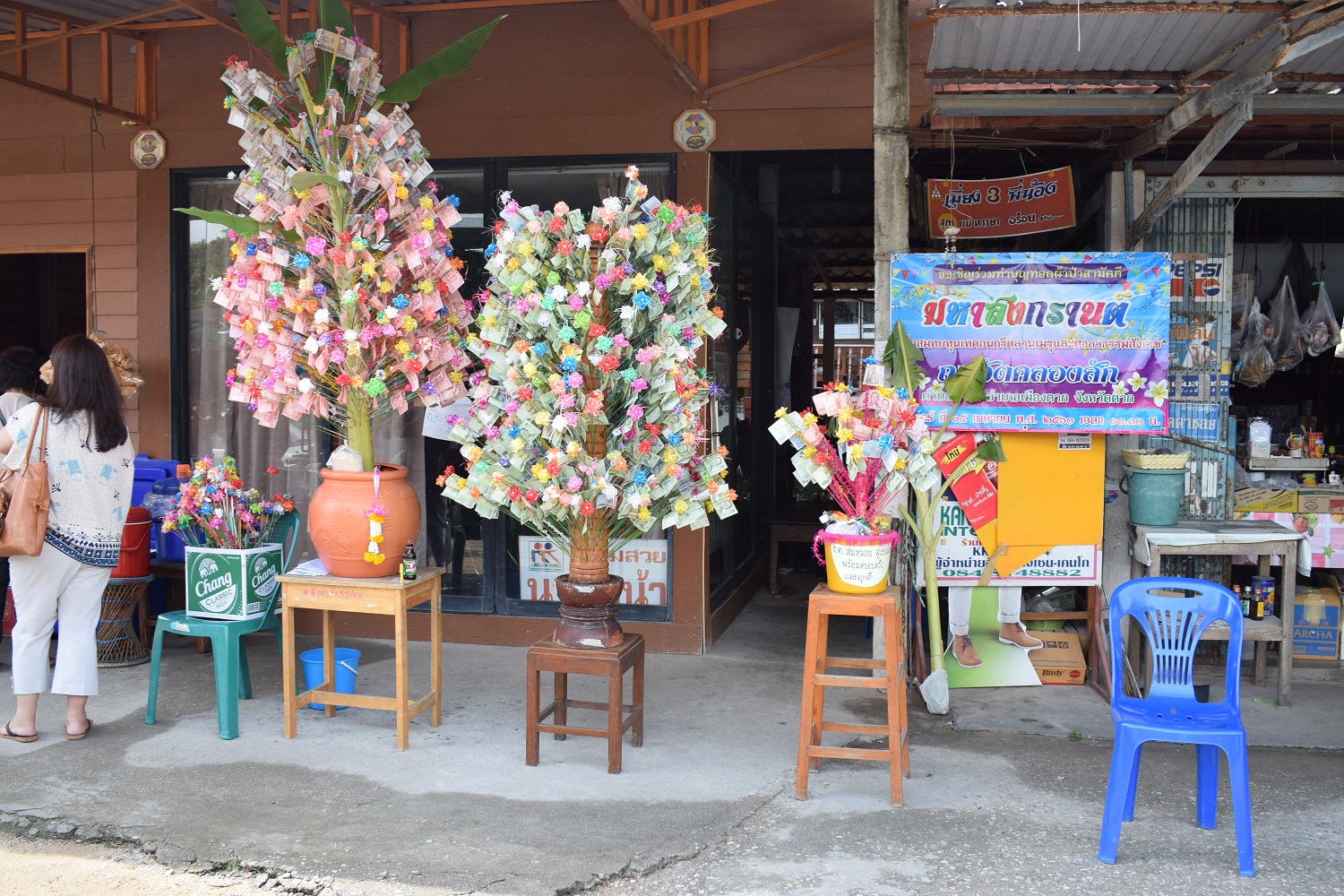
Image credit: PumpkinSky via Wikimedia Commons
While the general gist of Songkran is shared across the 4 regions of Thailand, there are unique customs that make each region distinct.
These include:
In the north, there is a belief that during dusk on 13 April, spirits wearing a red shirt on a boat will bring bad luck. People will drive away the bad luck through gunfire or firecrackers.
In the south, there is a custom called “Wan Wang” (วันว่าง), or “free day.” So on Songkran, southern Thais will abstain from doing work of any kind. There are also other little rules like to not trim your nails, to not cut your hair, and to not harm animals.
5. Songkran is also celebrated in other countries
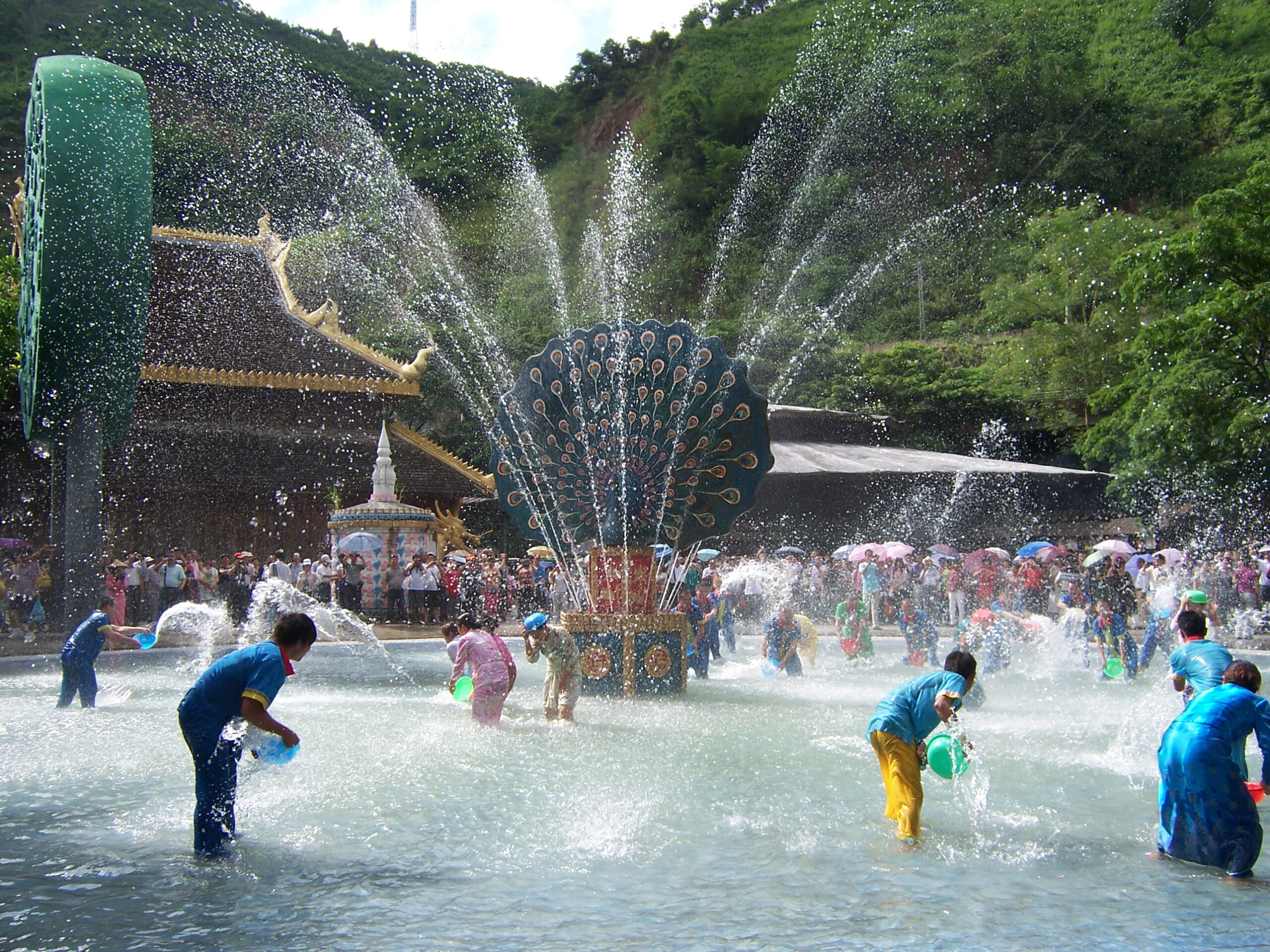
Image credit: zhanyoun via Wikimedia Commons
While the Thai Songkran is certainly one of the better known versions, many of Thailand’s neighbours also have their own celebrations around this time.
Some of these include Cambodia’s New Year, also known as Sangkranta. There’s also Pana Sankranti which is celebrated by Odisha in eastern India, and Sangken celebrated in northern India and Bangladesh. Finally, parts of southern China and Malaysia also celebrate a version of this holiday.
6. The original legend of Songkran is about a boy beating a god’s challenge
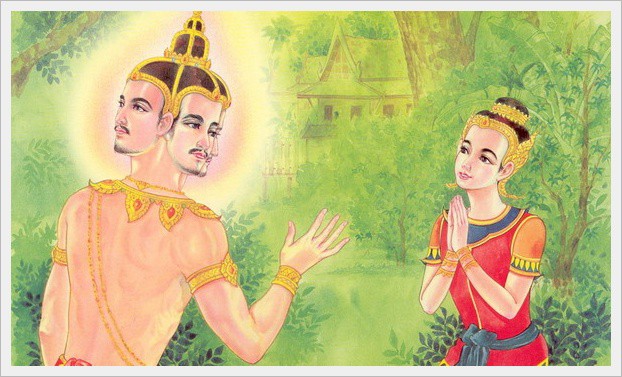
Image credit: educatepark.com
The stories of the origins of Songkran are about the death of Kapila Brahma (ท้าวกบิลพรหม), sometimes spelled Kapila Phrom, when the god lost a bet against a young child. Kapila Phrom challenged Thammabal (ธรรมบาล), after learning of his cleverness.
The challenge was a riddle, and the child was given 7 days to figure out an answer. The loser of this bet would have his head chopped off.
The riddle stumped the young child, but luck went his way when he eavesdropped on a pair of eagles who were planning on eating the boy after the boy lost the challenge. The eagles gave him the necessary answers, which the boy memorised and repeated to Kapila Brahma.
The god conceded. Before he was beheaded, he called for his 7 daughters, whom he tasked with taking care of his head. That’s because if his head fell to Earth, disaster would befall the lands.
That’s why there are 7 Nang Songkrans (Lady Songkran) for each day of the week, who would place the head on an elevated tray and lead a procession.
7. Despite its religious origins, Songkran has become a water fight festival filled with parties
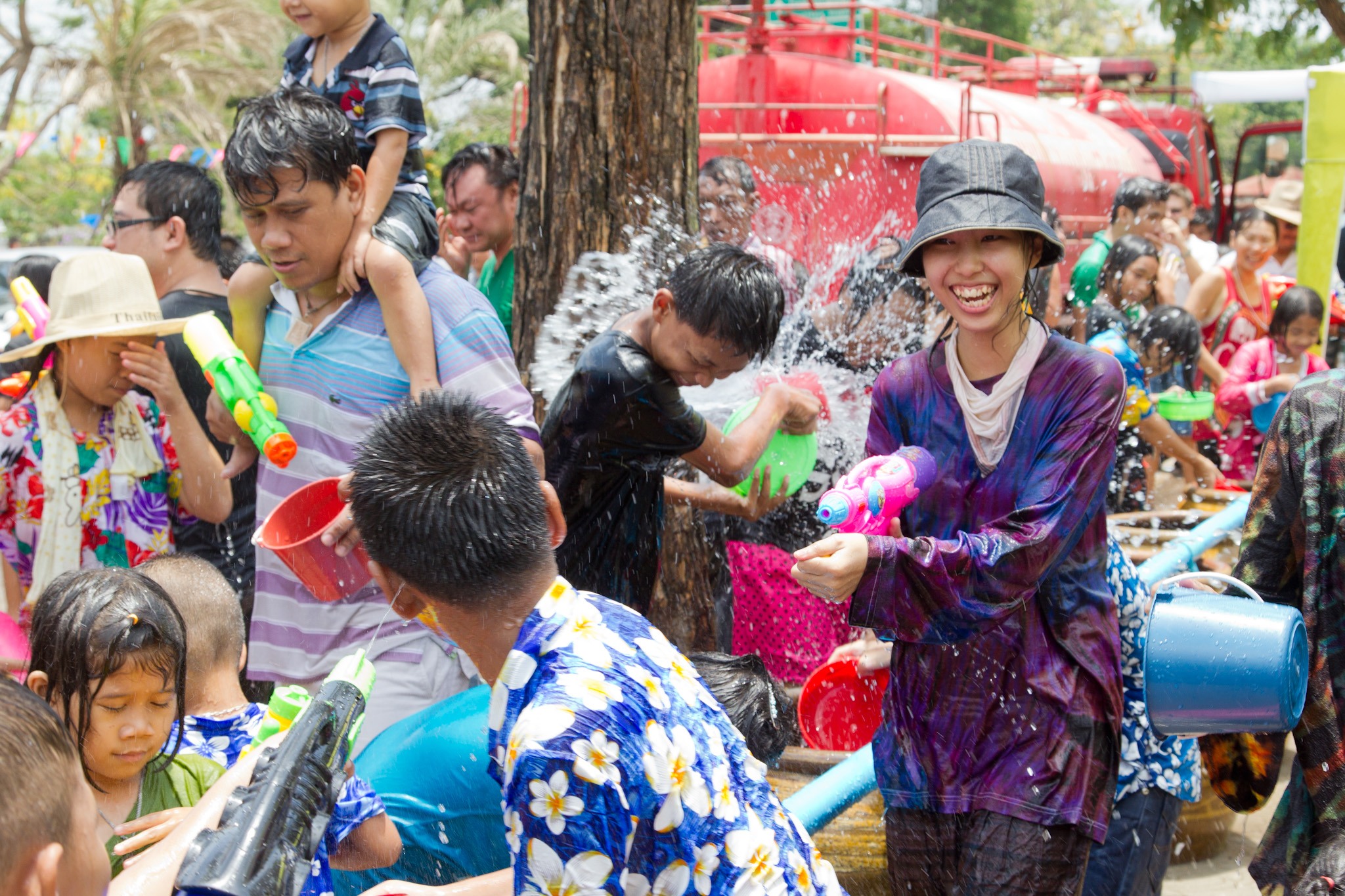
Image credit: JJ Harrison via Wikimedia Commons
Songkran has roots in Buddhism with traces all the way back to India. Yet despite its religious background, modern day Songkran is much more known for its amazing water fights and parties.
If you don’t know where to go for some of the best water festivals or parties, check out our guide to where to celebrate Songkran in Bangkok here.
Songkran festival is a time for respect, but also a time for fun
While respecting Songkran’s religious origins and traditional customs is certainly important, it is equally important to enjoy what the holiday has become. So go out there, get wet, cool down from the heat, and have tons of fun.
But if you’re still unsure of where to go, check out our guide to things to do in April. Alternatively, here are some massage parlours near BTS stations that’ll help if you have foot pain from all that backpacking.
Cover image adapted from: JJ Harrison via Wikimedia Commons, zhanyoun via Wikimedia Commons, educatepark.com
